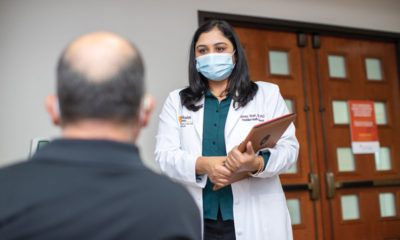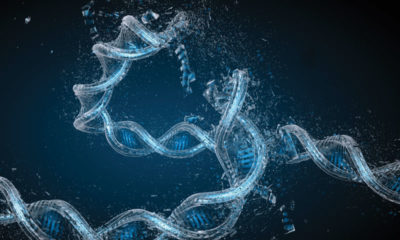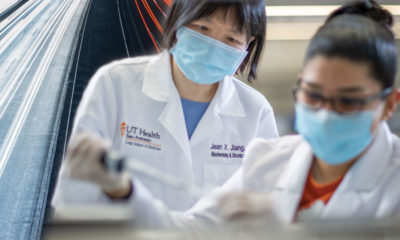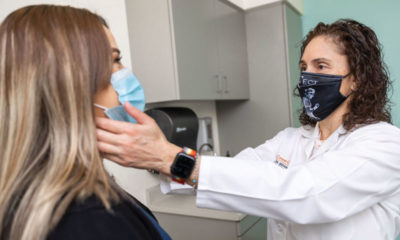Cancer Rehabilitation Clinic Provides Hope to Cancer Survivors
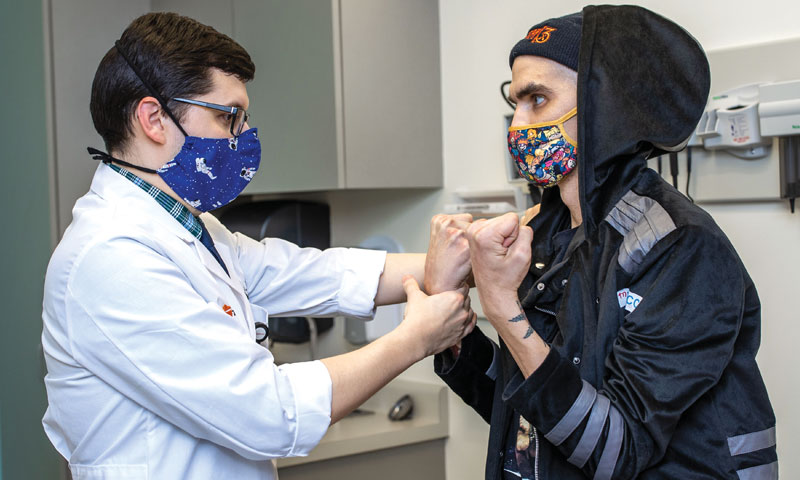
Mays Cancer Center Annual Report

For the 1.7 million patients who receive a cancer diagnosis every year and the 16.9 million cancer survivors in the United States, living with physical and psycho-social impairments are real side effects of cancer, and individuals cope with them on a daily basis. Fortunately, a growing trend in cancer treatment includes rehabilitation designed just for them. Cancer rehabilitation is giving them hope for better days ahead: hope that they may return to a normal life after cancer.
On the forefront of this growing patient resource and support is the Mays Cancer Center’s Cancer Rehabilitation Clinic which opened in November 2020 on the fifth floor of the Urschel Tower inside the Breast Oncology Clinic. Currently patients are being seen three half-days a week, and the clinic is fast becoming an important piece of patient care.
Almost every cancer patient can benefit from cancer rehabilitation at some point in their cancer journey, explains Brian Fricke, MD, director of cancer rehabilitation at the Mays Cancer Center.
“I work with patients and their families to optimize their function, independence and quality of life through diagnosis and treatment of cancer-related and non-cancer-related impairments,” he says.
Since cancer patients have unique rehabilitation needs depending on their cancer treatments, Dr. Fricke says it is important for them to be seen by a specialist in Physical Medicine & Rehabilitation (PM&R), called a physiatrist. A physiatrist himself, Dr. Fricke explains that he is trained to perform a variety of procedures and is dedicated to caring for the whole person, including treating pain, restoring function and improving quality of life.
Rehabilitation can alleviate many side effects, ranging from chemotherapy-induced peripheral neuropathy and radiation fibrosis syndrome to muscle weakness, fatigue and cognitive deficits, often called, “chemo brain.”
As a researcher and advocate for rehabilitation services for cancer patients, one of Dr. Fricke’s areas of interest is to improve shoulder dysfunction which commonly follows a mastectomy for breast cancer. Often patients begin describing symptoms within a couple of weeks of surgery including shoulder pain and difficulty with shoulder movement. He has had great success in improving pain and range of motion for these patients through botulinum toxin injections.
The medication is injected directly into specific muscles under ultrasound to guide exactly where it will go. Since botulinum toxin has intrinsic pain-relieving properties, the patient’s pain is relieved quickly and the muscle relaxes. This gives the patient the opportunity to work on stretching the muscle with exercises in order to obtain a better range of motion.
Another treatment area that Dr. Fricke has been successful in improving for cancer patients is lymphedema. Often a complication of surgery, lymphedema occurs when the lymphatic fluid is disrupted and backs up into soft tissue like an arm, leg, neck and face, causing them to swell.
A complication of surgery that entails taking a biopsy or removal of the lymph nodes, lymphedema is seen in head, neck and breast cancer patients as well as those with melanoma. Additionally, lymphatic fluid allows white blood cells to move around the body, and when it is disrupted, the patient risks developing an infection more easily.
Dr. Fricke has found early intervention which takes an interdisciplinary approach to be the best treatment for lymphedema. The ideal first step is to have patients evaluated prior to surgery. This evaluation includes measuring limb volumes, exercise counseling and being fitted for compression garments, to name a few. This early intervention has shown to help alleviate lymphedema when it occurs.
The third area that the clinic would like to expand is called prehabilitation. The idea is to prepare the patient’s body and mind for the various surgeries and treatments that are inevitable to beat cancer.
“We know that these big surgeries are going to cause certain issues, and that chemotherapy regimens and stem-cell transplants, for example, take a heavy toll on a body,” Dr. Fricke says. “Let’s plan for it by getting the body ready to take this big hit. Prehabilitation treatment is a combination of physical therapy to improve aerobic capacity and strengthening exercises as well as nutrition counseling to optimize protein intake, improve cardiac health and increase lean muscle mass.”
As cancer rehabilitation services continue to become part of every cancer patient’s treatment, Dr. Fricke and his colleagues at the Mays Cancer Center will continue to advocate for them and conduct research to improve their lives.

